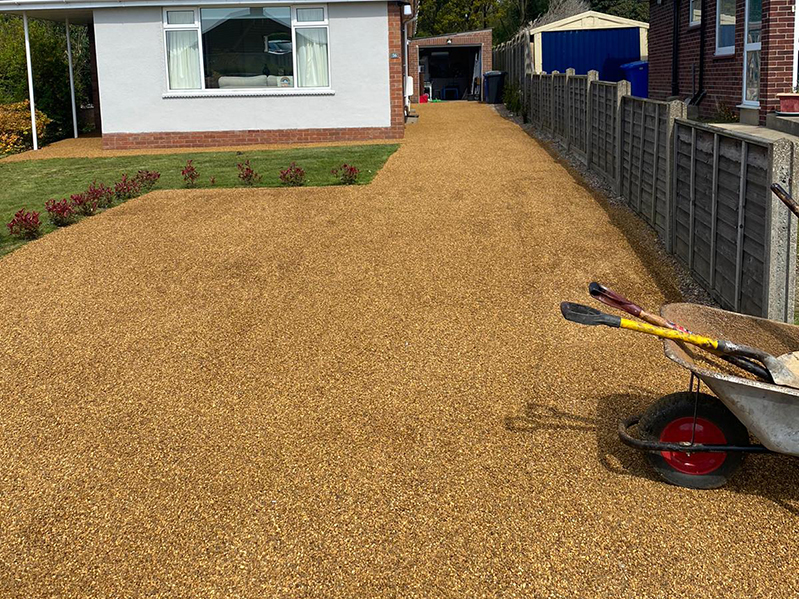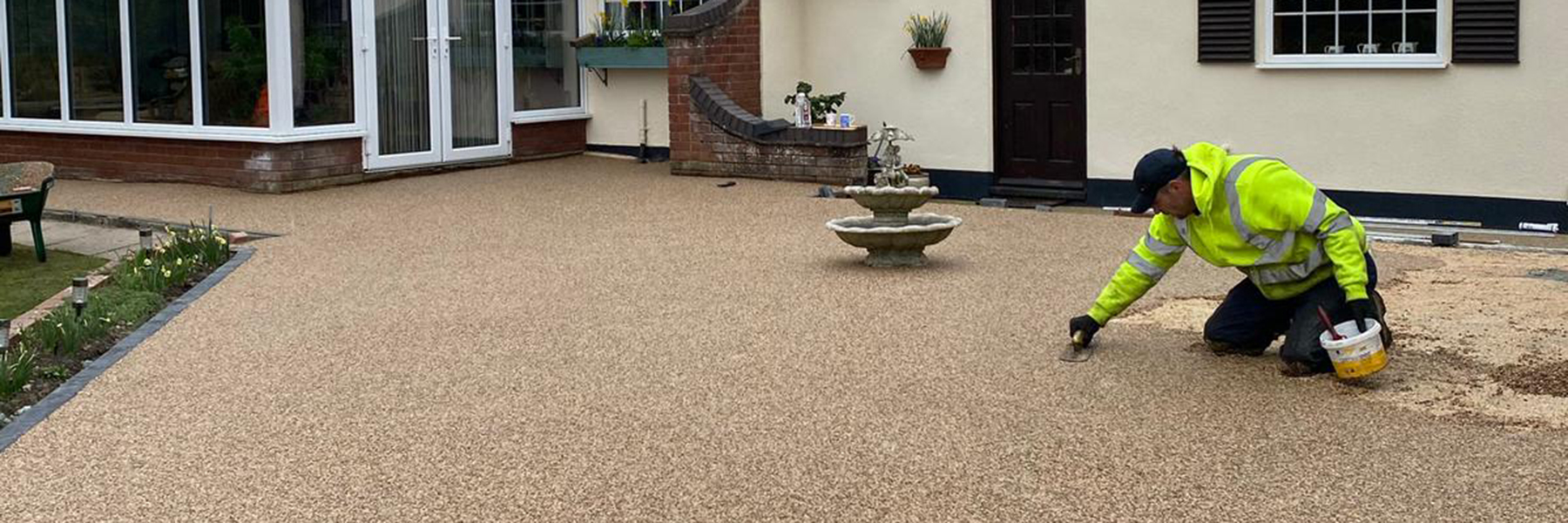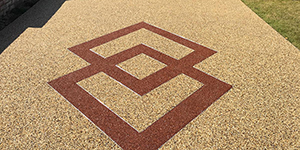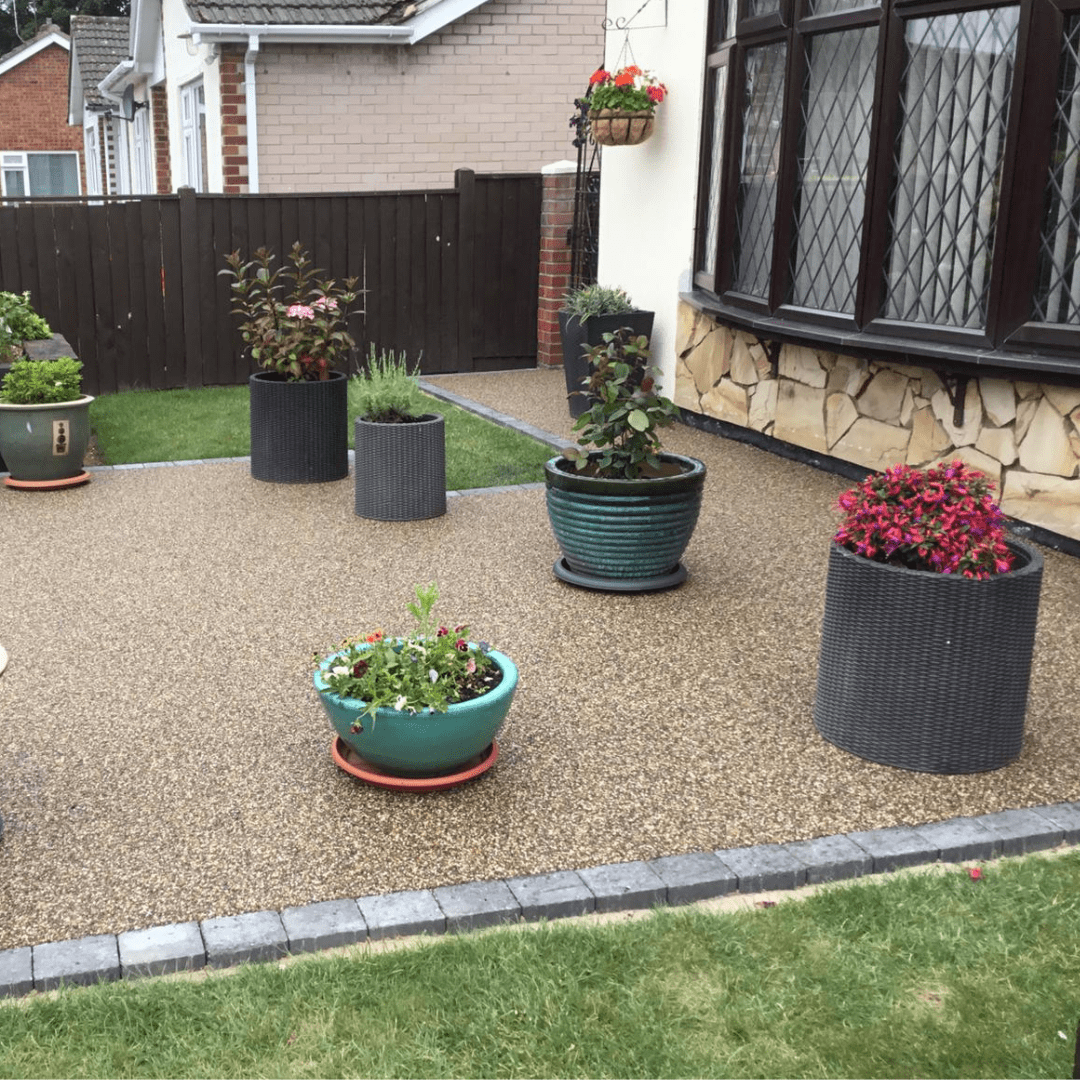
At Driveline Surfacing, we love to talk about driveways. But we’re not just about the surface. We go down deep – way beneath that lovely surface to the strong foundations that give our driveways longevity and durability.
Today, let’s talk about tar-and-chip. Have you ever wondered what a tar-and-chip surface is made of? Or how it’s made? … Have you ever considered having a tar-and-chip driveway at your home or business?
A tar-and-chip surface is made by covering hot bitumen – aka asphalt – with stone aggregate.
This good-looking, versatile surface has been a mainstay for driveways and carriageways in the UK for centuries. It’s also known as tar and chippings, tar and stone, tar and granite, chip and seal, seal chip, and tar bond.
A tar-and-chip driveway is hard wearing, low maintenance, and less expensive than many other forms of surfacing.
How is a Tar and Chip Surface Made?
A driveway must have strong foundations. We pack a mixed-aggregate sub-base into our excavated site, and then cover it with hot bitumen, which acts as a seal over the sub-base. Stone aggregate is spread over the sticky, molten asphalt, and a heavy roller presses the pieces of stone firmly into their bitumen bed.
Often, we find we’re laying a new tar-and-chip surface on top of an existing driveway. In this case, we’ll clear the site of debris and fill in any potholes. Thorough preparation is always important.
Do You Need Drainage With Tar and Chip?
To be compliant with current UK Building Regulations, you must show evidence of adequate drainage. Because a tar-and-chip surface is impermeable (water can’t pass through the bitumen layer), provision must be made for the duct of surface water. But this doesn’t mean channelling the water to a public drain!
After some serious flooding in 2007, legislation was introduced to enforce the provision of alternative drainage for all new (and impermeable) driveways and patios. If water can run off your driveway into a stream or a garden, that’s fine. If not, we’ll incorporate a simple drainage system to take it there.
Is Tar and Chip Expensive?
A tar-and-chip driveway is inexpensive to install and costs next-to-nothing to maintain. Tar-and-chip doesn’t always last as long as some other surfaces. But even so, over a lifespan of approximately ten years, it’s an economical choice.
What Aggregate Can I Have in My Tar and Chip Driveway?
At Driveline Surfacing Ltd, we specialise in two very beautiful kinds of aggregate: grey granite – angular pieces of crushed granite with flat, reflective surfaces; and pea shingle – small, naturally smooth stones in shades of light-brown.
A tar-and-chip surface provides excellent traction, whatever kind of aggregate you choose. Because the stones are held firmly in place, tyres and shoes don’t go skidding about like they do on loose gravel. And because the stones protrude from the bitumen base, tyres and shoes are able to get good purchase in wet or icy conditions.
Contact Driveline Surfacing Ltd
To talk to us about your driveway project, or to find out more about our services, give us a call on 01603 856966 or email info@drivelinesurfacingltd.co.uk. For a FREE QUOTE, just fill in the quote form.
Areas Covered
Latest Posts
How Long Do Resin Driveways Last? Factors That Affect Their Longevity
When considering a new driveway, resin-bound surfaces' durability and aesthetic appeal are often enticing. [...]
The Ultimate Guide to Resin Bound
Resin-bound surfaces have become a very popular choice for driveways, patios, pathways and other open [...]
The Ultimate Guide to Tar & Chip
Tar and chip is becoming an increasingly popular surface option in the UK thanks [...]






